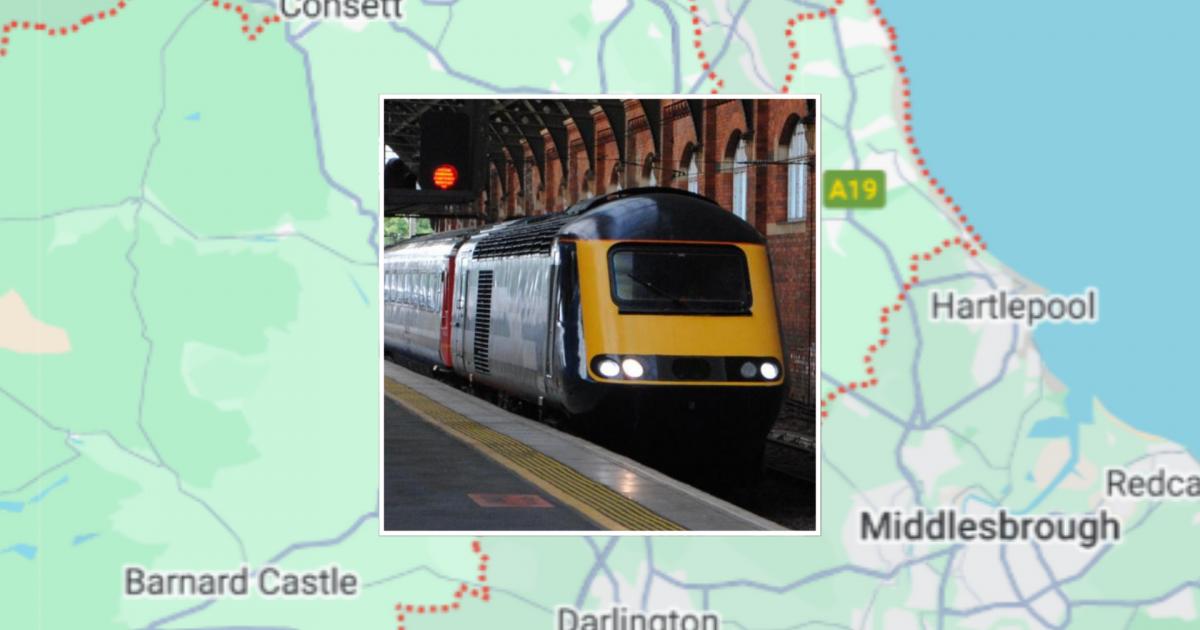Timed to coincide with the 200th anniversary of the Stockton and Darlington Railway, the journey will offer passengers a unique window into the past while travelling through some of the region’s most cherished countryside and communities.
Set to depart on Saturday, August 16, the journey begins deep in the Durham Dales and works its way through historic rail towns, bustling cities, and postcard-worthy valleys before arriving in Scotland’s majestic capital.
Here’s a stop-by-stop look at the historic route:
Stanhope (Departure Point)
Nestled in the heart of Weardale, this charming market town is surrounded by rolling moorland and stone-walled pastures.
The starting point of the journey, Stanhope, is home to a station on the preserved Weardale Railway, which once carried coal and limestone across the North.
Frosterley
This tiny village, famed for its black limestone (Frosterley Marble), will offer a rare chance for locals to board a high-speed train from their doorstep — a surreal sight in such a sleepy corner of the Durham Dales.
Wolsingham
A gateway to the North Pennines and a town with deep rail heritage, Wolsingham was once a vital industrial hub.
Its preserved station now comes to life with the roar of an InterCity 125.
Witton-le-Wear
A small but historic stop, Witton-le-Wear brings passengers closer to the riverside beauty of the River Wear and wooded banks — perfect countryside views to start the scenic stretch of the journey.
Bishop Auckland
The spiritual heart of the Weardale Railway, Bishop Auckland is a vital juncture in this journey.
Once a key coal rail town, it’s now a growing cultural centre with attractions like Auckland Castle and the Spanish Gallery. Tickets can still be booked at the station.
Shildon
No railway route in the North would be complete without a stop at Shildon — the cradle of the railway age.
As the world’s first railway town, and home to Locomotion Museum, it is a symbolic highlight of this bicentennial tribute.
Darlington
Where it all began. The Stockton and Darlington Railway — the world’s first public railway to use steam locomotives — ran from here in 1825.
This year’s journey pays homage to that legacy as it passes through this historic railway town.
Eaglescliffe
Located just outside Stockton-on-Tees, this modern stop links the journey with Teesside and offers sweeping views over the River Tees as the train pushes northwards.
Durham
One of England’s crown jewels, Durham offers passengers a chance to gaze at its UNESCO-listed cathedral and castle as the train powers through one of the most scenic city backdrops in the country.
Chester-le-Street
With its picturesque station and links to the Durham coalfields, this town has strong industrial roots and remains a proud part of the rail network.
Newcastle
The final North East stop, Newcastle provides a stunning urban contrast to the rural start of the journey.
Crossing the River Tyne, passengers can spot the famous Tyne Bridge and nearby Castle Keep before the train shifts onto the East Coast Main Line.
Onward to Edinburgh
From Newcastle, the train accelerates along the East Coast Main Line, slicing through Berwick-upon-Tweed and the Borders before arriving at Edinburgh Waverley Station, in the shadow of Arthur’s Seat and the iconic castle.
The route combines serene countryside with industrial landmarks, each stop echoing the impact the railways had in shaping Britain.
Luke Holmes, CEO of Excursions By Rail, calls it: “A once-in-a-lifetime opportunity to be part of British railway history; a fitting tribute to 200 years of innovation.”
With fewer than 20 seats left, the route — and the story it tells — is capturing the imagination of rail enthusiasts and families alike.
